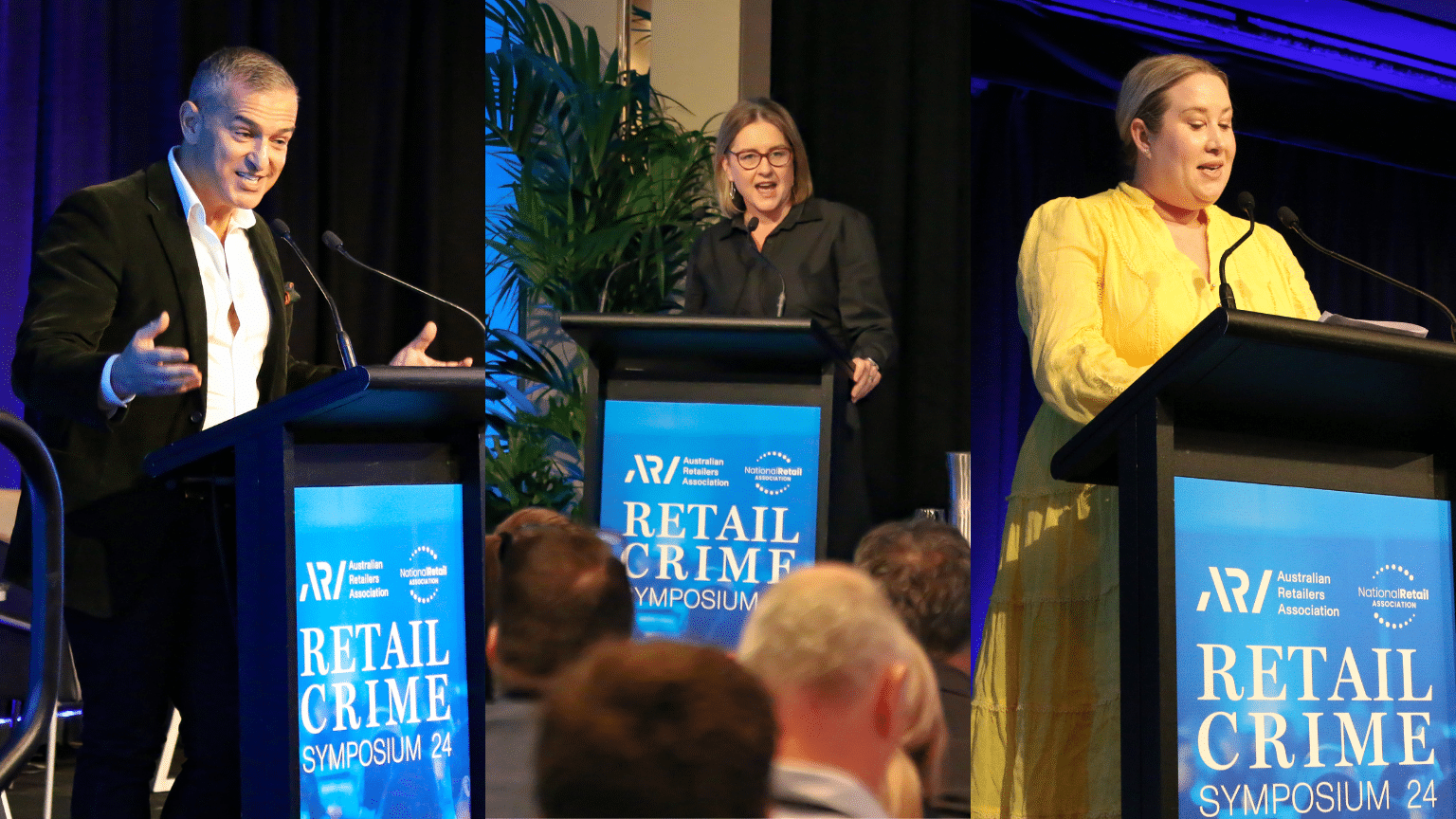Last week marked a significant milestone in the prevention of retail crime as the Australian Retailers Association (ARA) and the National Retail Association (NRA) came together to our first collaborative event since the announcement of the amalgamation, with the 2024 Retail Crime Symposium.
With retail crime one of the top issues for our industry and both associations, the Symposium highlighted the urgency of interventions in addressing an issue that is estimated to cost upwards of $9 billion a year to the Australian economy. Beyond the financial cost to the industry, one of the main concerns that was present on the day was about the impact of crime on our front-line staff.
In the opening session, Dr Xanthe Mallet (Associate Professor of Criminology at University of Newcastle) framed the wider societal issues that are contributors to the year-on-year increase in retail crime rates. The cost of living and rising inflation was deemed to have an impact, with police reporting more first-time offenders, and that the theft of groceries has increased. Dr Mallett referenced the impacts of youth justice and crime as having an impact on the wider picture of retail crime too. Tasmanian Senator Jacqui Lambie followed this theme showcasing Veterans Mentors – a program aimed at youth development.
We were delighted to be joined by Victorian Premier Jacinta Allan, who paid tribute to front-line retail workers and recognised the unacceptable, everyday aggression they face. The Premier reiterated her government’s pledge for further legislative changes aimed at protecting consumer facing roles such as retail and hospitality. And Ms Allan, confirmed that her government will convene a Worker Protection Consultation Group to oversee the development of the legislative approach, ensuring government hears from a wide range of people and get the balance of these changes right.
Through the rest of the day, there were a number of key themes emerging from the symposium that will shape the ongoing industry response to tackling retail crime.
Stronger laws and deterrents
One of the most pressing issues addressed at the symposium was the need for stronger laws and deterrents to combat retail crime. The ARA and NRA have been advocating for stronger penalties for people who assault front-line workers. In the past 12 months, new laws have been introduced in South Australia, New South Wales, Western Australia and the Northern Territory, with legislation drafted in Tasmania and announced in Victoria.
These are important steps in the right direction, but the retail sector is still calling for universal protections for front-line workers, and a national approach to knife laws, bail laws and laws for youth offenders that cherry picks the best approach from different jurisdictions across the country.
Stronger relationships
Building stronger relationships between the retail sector and law enforcement agencies emerged as a central theme of the symposium. The discussions highlighted the importance of fostering open lines of communication and cooperation between retailers and police forces. Effective crime prevention requires more than just reacting to incidents; it requires a proactive partnership where information and strategies are shared to anticipate and prevent crime.
Throughout the day, police representatives from across the country spoke of the need to target reoffending, which presents a large and increasing caseload for police, and risk for retailers. We also heard about the success of a dedicated retail crime police taskforce in South Australia, which has resulted in over 1,500 arrests of repeat offenders. There was also an acknowledgement of the increased presence of organised crime groups operating in the industry and more consideration is needed on how to disrupt this.
Better information sharing
The symposium underscored the necessity for better information sharing between retailers, law enforcement and other stakeholders. The establishment of efficient communication channels for sharing data on crime trends, incident reports, and best practices was identified as a critical step towards effective crime prevention.
By pooling resources and knowledge, the retail sector and law enforcement can develop more informed and strategic approaches to tackle retail crime. He heard overwhelming support for collaborative retail crime reporting platforms that could be used proactively to gather data, share evidence and report trends on retail crime.
Increased visibility of impacts
Another significant takeaway from the symposium was the need for increased visibility of the impacts of retail crime. Both the human and financial toll of retail crime on workers and businesses were brought to the forefront.
Gerard Dwyer from the Shop, Distributive and Allied Employees’ Association (SDA) spoke about the human face of retail crime. In an SDA report over 85% of staff reported experiencing customer aggression. The research also noted that 51% of staff reported not always feeling safe at work.
Through the day, we also heard that the increase of customer aggression had also become increasingly violent and the importance of intervening in retail crime – as a workplace risk – to ensure retail workers feel safe and protected, participant from diverse or disadvantaged backgrounds.
Use of technology
The symposium also highlighted the growing role of technology in the fight against retail crime. Advances in surveillance systems, data analytics, and digital reporting tools were presented as crucial resources for modern crime prevention strategies.
We heard and saw compelling case studies from event sponsor Duress, who have recently rolled out a safety device that can be activated to provide support at a point of crisis or begin recording and capture evidence should an incident escalate. Feedback found that often the presence of the devices attached to front line staff was enough of a deterrent and made staff feel safe.
Technology can also be deployed in training to aid the development of our people. Online scenarios can be developed ensuring staff are familiar with potential trigger points and how to respond.
Looking ahead
As we move forward, the challenge will be to transform these key takeaways into actionable strategies that can make a real difference in protecting workers and reducing crime across the retail sector. Something the ARA & the NRA are committed to working with our partners to do.






















